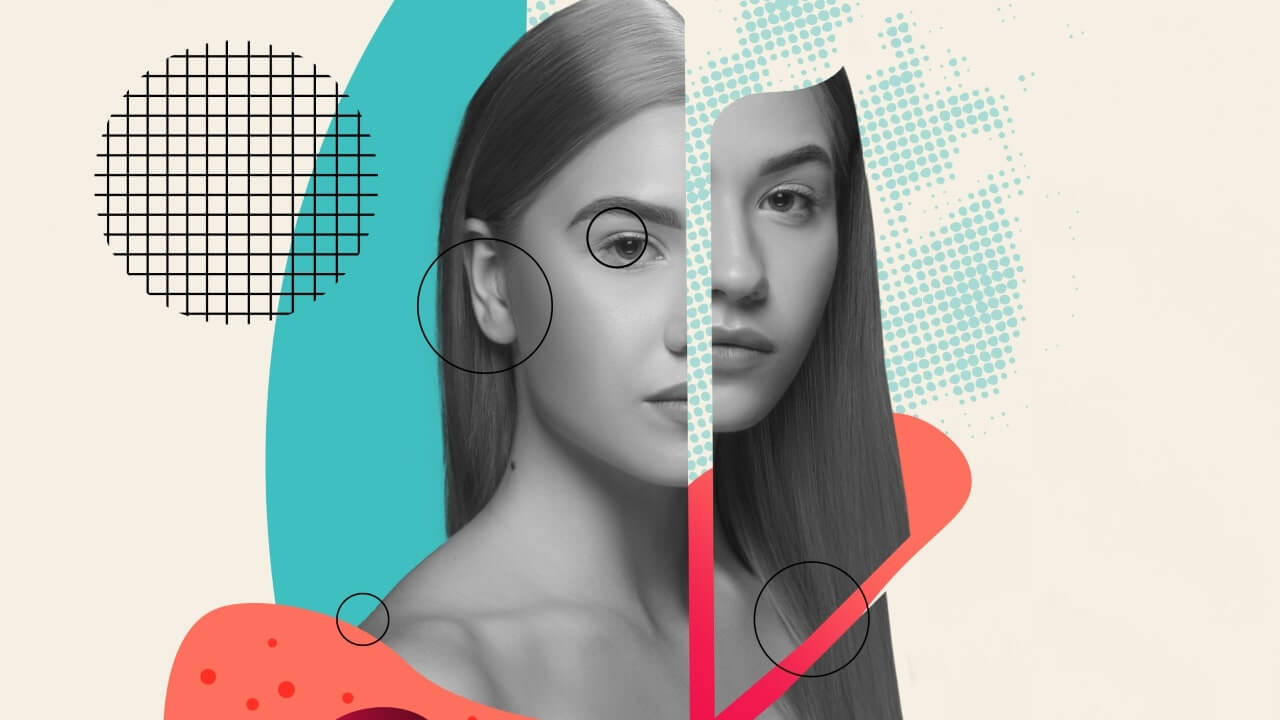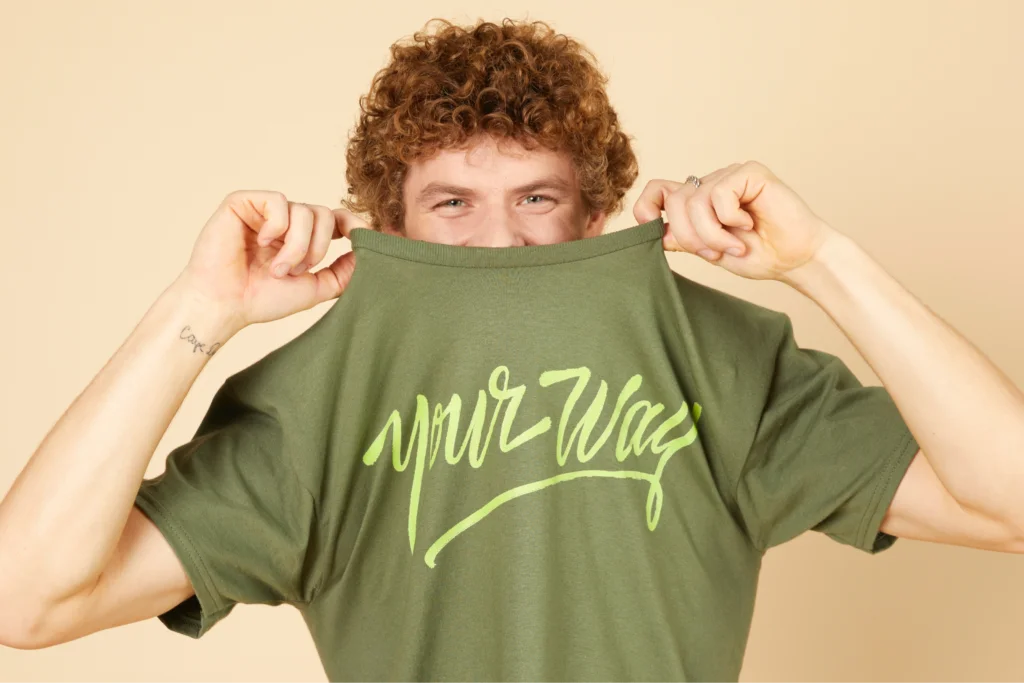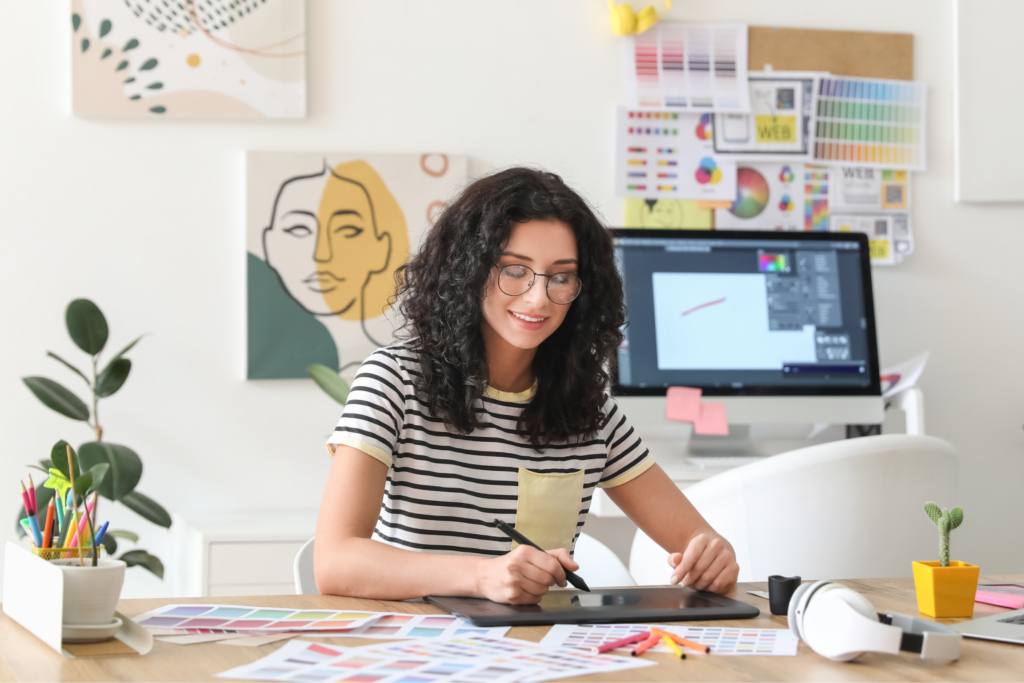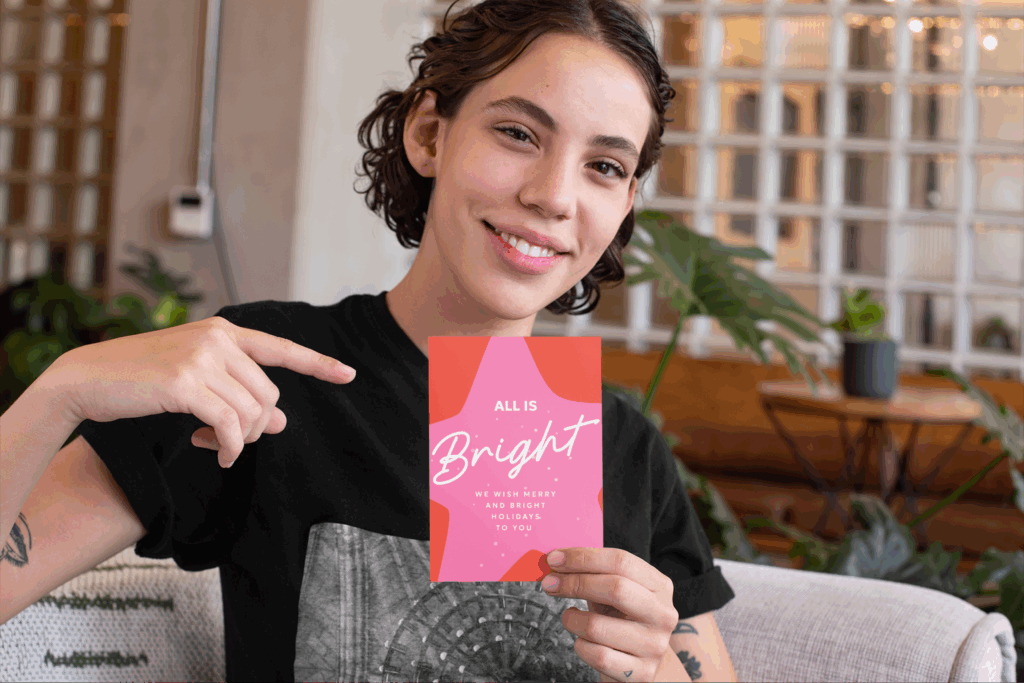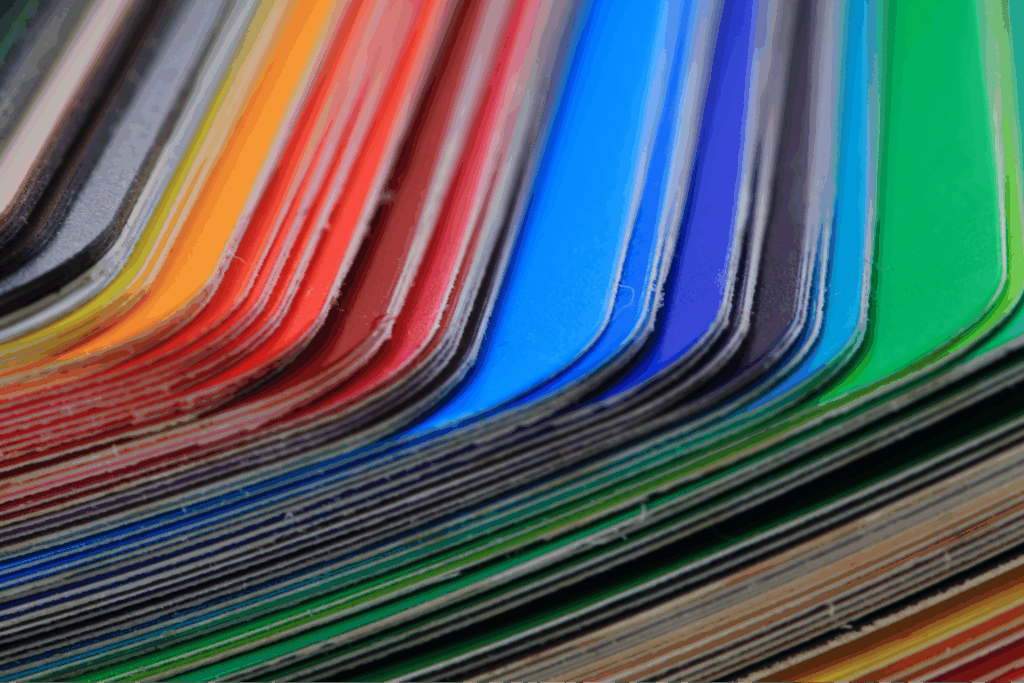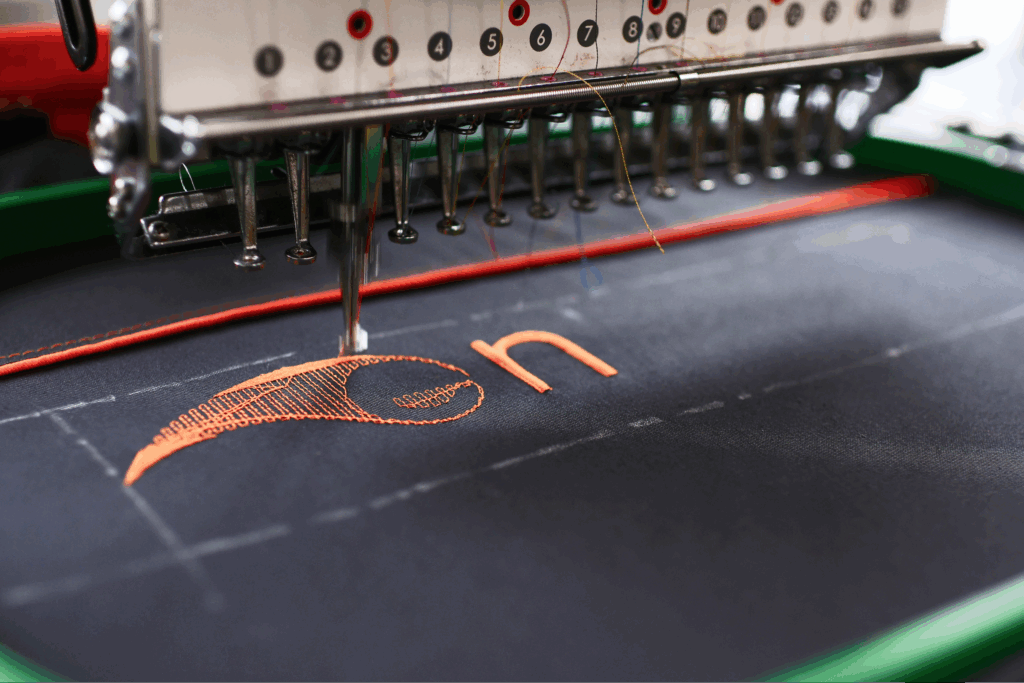Create what’s trending. Sell what’s hot
Design keeps pushing the boundaries of creativity and innovation. So we’ve highlighted the key graphic design trends that will ignite fresh ideas and keep you at the forefront of the industry.
Scroll further for a list Adobe services that can help you achieve intricate and precise visuals. Combine Adobe’s advanced tools with Printify’s versatile platform to create designs that captivate and sell.
Key design trends for 2024
Explore the top design trends for 2024 and stay ahead of the curve, as predicted by Adobe’s 2024 design trends report.
1. Minimalistic and clean designs
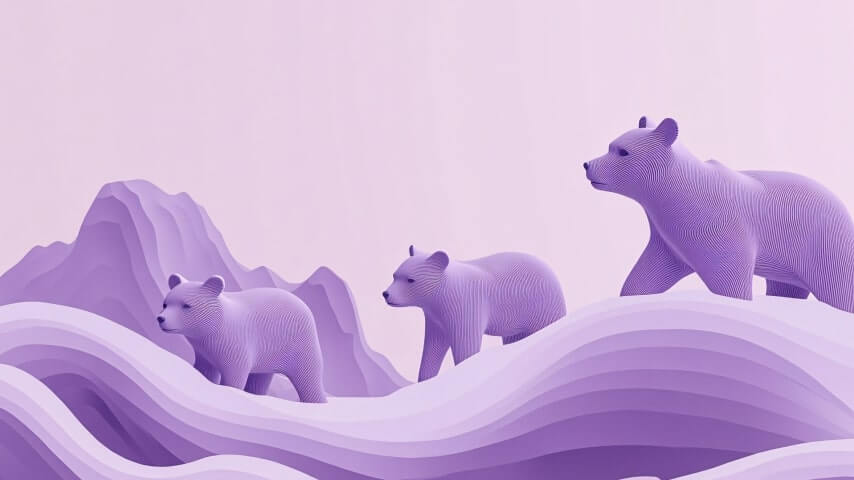
Key Concepts:
- Simplicity
- Open Space
- Clarity
- Function-Driven
- Subtle Details
Minimalistic designs with clean lines and ample white space continue to be a leading graphic design trend. These designs focus on clarity and functionality, removing unnecessary elements to highlight the core message or prioritize form over color.
Use clean lines and generous white space in product designs, such as apparel, home decor, and accessories, to create a modern and sophisticated look. Minimalistic branding and packaging can also enhance the customer experience by providing a sleek and professional appearance.
Examples of Minimalistic and Clean Designs:
- Brands like Apple and Muji excel in minimalistic design, providing seamless user experiences that emphasize the product.
- Modern packaging designs have also embraced minimalism, focusing on simplicity and eco-friendly materials.
2. Vibrant colors and gradients
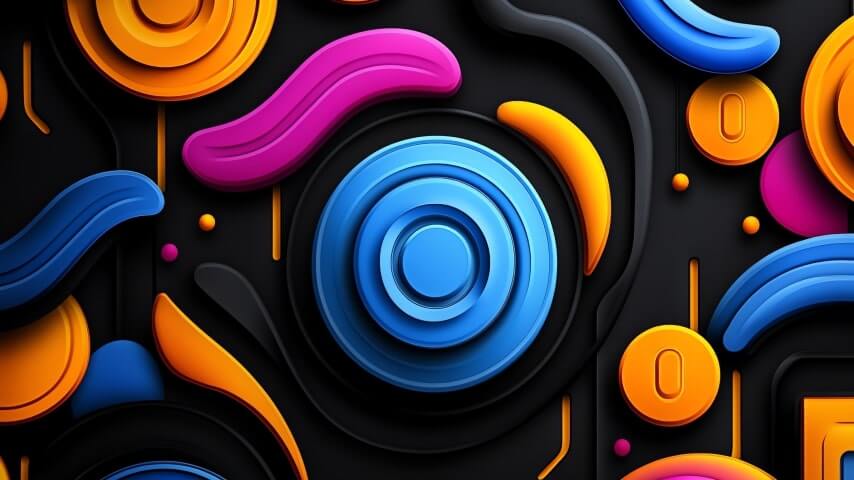
Key Concepts:
- Bold Palettes
- Dynamic Blends
- High Contrast
- Eye-Catching Hues
- Gradient Shifts
Vibrant colors and abstract gradients provide a lot of design variety. A stark contrast color palette injects energy and excitement, making designs pop in an often gray and minimalist background.
Pairing these vibrant colors with geometric shapes or smooth curves can create visually striking effects. Using gradient color transitions or multiple bright colors adds a dynamic feel to your designs that can be paired, layered, and matched for a unique look.
Bold and dynamic color schemes can be used to make apparel busy and attract attention, which appeals to many, especially a younger audience. Vibrant product images and marketing materials can also enhance the visual appeal of online stores and social media platforms.
Examples of Vibrant Colors and Gradients:
- Spotify’s branding is a prime example of vibrant and dynamic use of colors.
- Social media graphics that incorporate high-contrast palettes tend to stand out and attract more engagement.
3. 3D elements and depth
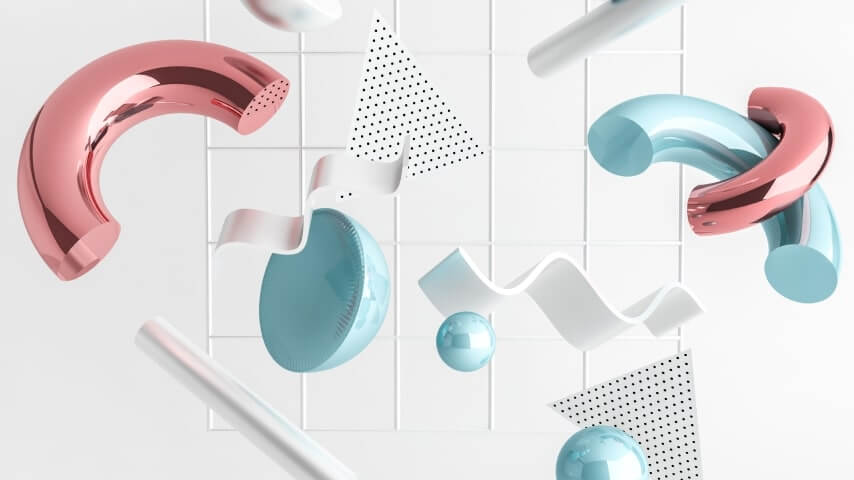
Key Concepts:
- Realism
- Dimension
- Layering
- Immersion
- 3D Texture
Adding depth with 3D elements brings a new layer of visual appeal. Whether for web design, social media graphics, or products, 3D elements can make your work more immersive.
3D model elements create a sense of realism and interaction, making visuals more engaging. Data visualization using 3D models can also make complex information more accessible and understandable to larger audiences.
Use 3D mockups for product images to give customers a realistic view of what they’re purchasing. Adding 3D textures and layers to your product designs can be a fun design idea as long as they stay as supporting features, such as patterns, grid lines, or dimensional text.
Examples of 3D Elements and Depth:
- Nike’s product showcases often feature 3D elements to highlight the intricacies and design details of their footwear.
- Websites with 3D design elements provide a more interactive user experience.
4. Sustainable and eco-friendly design

Key Concepts:
- Earth Tones
- Recycled Materials
- Eco-Conscious
- Minimalist Packaging
- Green Design
Sustainable and eco-friendly designs are more than trends; they’re a movement towards responsibility. Using earthy tones, recycled materials, and promoting environmental consciousness can resonate well with today’s target audience.
Use earth tones and choose manufacturers that use eco-friendly inks and materials. Highlight these features in product descriptions and marketing elements. Sustainable packaging can also reinforce your brand’s commitment to environmental responsibility.
Examples of Sustainable and Eco-Friendly Design:
- Brands like Patagonia and IKEA have been at the forefront, integrating sustainability into their core design philosophies.
- Graphic designers who focus on sustainable design often draw inspiration from the natural world, creating designs that emphasize well-being and environmental care.
5. Smooth curves
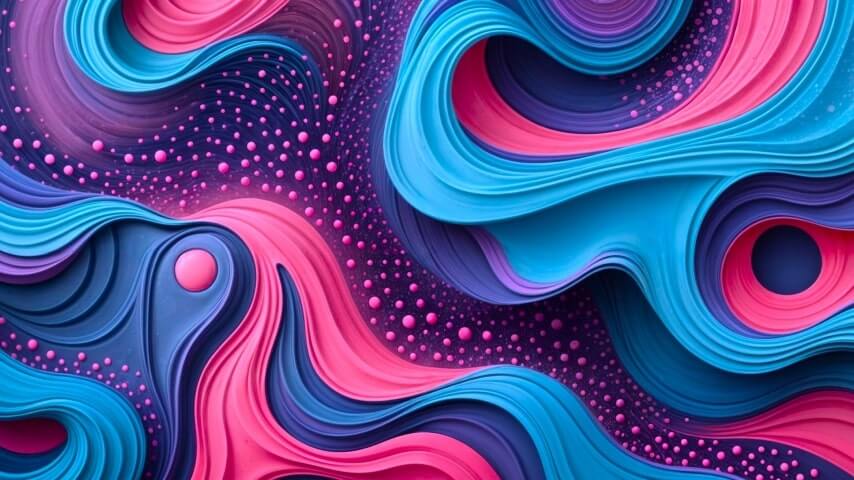
Key Concepts:
- Flowing Lines
- Organic Forms
- Fluid Motion
- Soft Edges
- Natural Shapes
Organic shapes and smooth curves with complementary colors offer a sense of fluidity and movement. These elements make designs feel more natural and less rigid, reflecting a harmonious balance inspired by the natural world.
Use flowing lines and soft edges to make products more visually appealing and unique, attracting customers looking for distinctive designs. Alternate spacing and asymmetry can also give your designs a unique touch and make them stand out, keeping products non-conforming.
Examples of Smooth Curves:
- Coca-Cola’s iconic logo and bottle shape are examples of the effective use of smooth curves.
- Organic architecture and modern interior design benefit from smooth, flowing shapes, creating more inviting and aesthetically pleasing spaces.
6. Retrowave and nostalgic designs
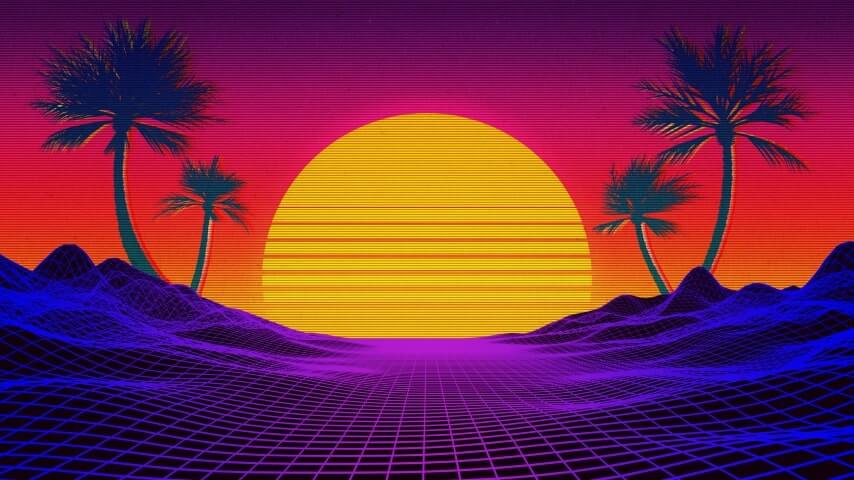
Key Concepts:
- Funky Patterns
- Vintage Minimalism
- Retro Stripes
- Throwback Aesthetics
- Classic Colors
The past few years have made nostalgia into a powerful storyteller. Retrowave and nostalgic designs draw inspiration from old media, salvaging the styles of the past that need a do-over.
In today’s quick-access media, retrowave styles evoke a feel of simpler times during the last century. Incorporating elements like sideways composition and experimental typography can help you enhance the nostalgic vibe.
Throwback aesthetics are a great selling point for many customers. Designs that evoke old media – comics, TV shows, brands – are a statement piece now more than ever. Nostalgic branding and marketing can also evoke emotional connections with your audience.
Examples of Retrowave and Nostalgic Designs:
- Stranger Things’ promotional materials capture the 80s feel perfectly.
- Designers incorporate nostalgic patterns by drawing inspiration from toned-down color palettes or a sun-bleached effect to make graphic posters feel timeless.
7. Animated and interactive design
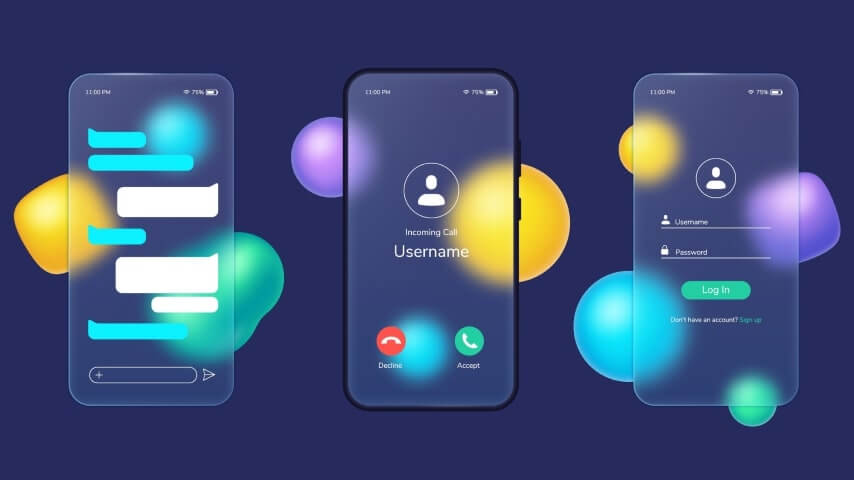
Key Concepts:
- Motion
- User Interaction
- Engagement
- Dynamic Content
- Audio Elements
Interactivity is the spark that keeps digital content alive. Animated and interactive designs can captivate users and make your content more engaging, especially when incorporating audio. From subtle animations to interactive elements, this trend creates a focal point that keeps the user active.
Use animated product displays and interactive features on your storefront to create a more engaging shopping experience. Animated graphics and videos for social media can also increase visibility and interaction with your audience.
Examples of Animated and Interactive Design:
- Online stores often use animated product displays and interactive features to showcase products dynamically and improve the shopping experience.
- Adding animations to presentations and infographics can make data more engaging and easier to understand, capturing the audience’s attention.
For more information on graphic design trends and product curation, check out our Print on Demand Design Trends blog page.
How to implement design trends with Adobe?
1. Adobe Express for ease and speed
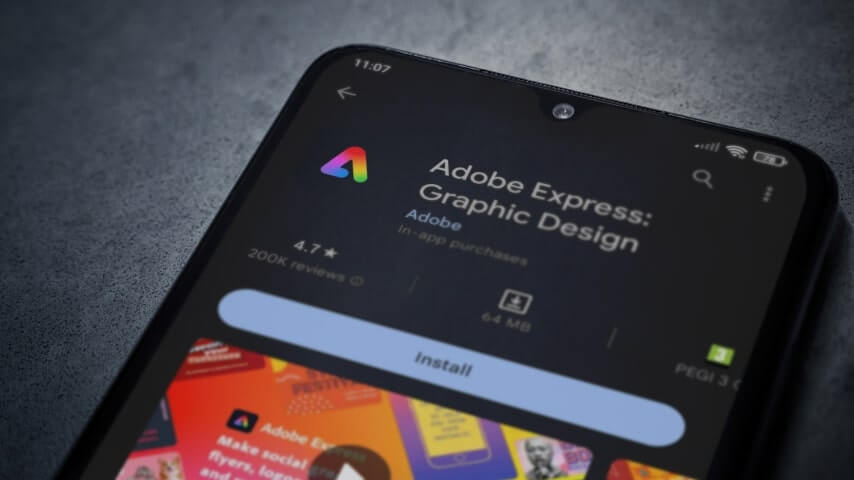
Adobe Express is a powerful tool for quick and creative graphic design. Its intuitive interface and versatile features make it perfect for crafting designs for apparel, accessories, or branding your business. Adobe Express empowers you to bring vibrant and eye-catching designs to life, even if you’re new to graphic design.
Experiment with templates, add dynamic text, and incorporate striking images to craft unique and engaging content. Play with various design elements to effortlessly achieve polished and professional results.
Key Features:
- User-Friendly Interface: Ideal for beginners and quick design projects.
- Templates: Choose from a wide range of templates for branding, apparel design, and more.
- Text Tools: Add and customize text with various fonts and styles.
- Image Integration: Incorporate and edit images seamlessly.
- Design Elements: Use shapes, icons, and graphics to enhance your designs.
- Export Options: Easily export your designs for web or print.
2. Adobe Illustrator for all things vector
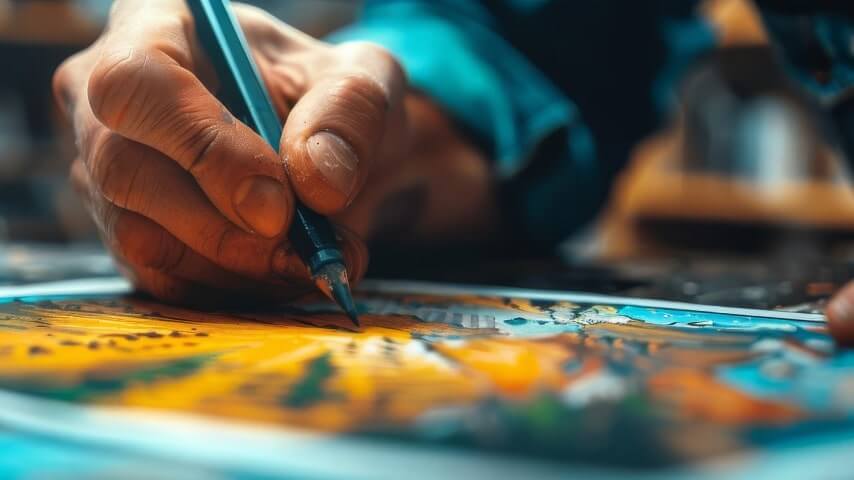
Adobe Illustrator is your go-to tool for creating vector graphics. Its precision and versatility make it ideal for crafting geometric shapes, logos, and detailed illustrations. Illustrator helps bring minimalistic designs and smooth curves to life, especially if you want an enhanced resolution.
Use Illustrator for experimental fonts and intricate shapes with altered spacing to create unique cutting-edge designs. Play with contrasting colors and sharp edges for smooth visuals.
Key Features:
- Precision Drawing Tools: Perfect for creating scalable geometric shapes and logos.
- Extensive Font Tools: Design unique and experimental fonts.
- Color Tools: Play with contrasting colors and create high-impact visuals.
- Vector Brushes: Create intricate and detailed illustrations.
- Advanced Gradient Tools: Make use of color transitions for dynamic designs.
- Layering: Organize and manage complex designs efficiently.
3. Photoshop for image editing

Adobe Photoshop excels in image manipulation and editing. Whether you’re enhancing pictures or creating vibrant colors and abstract gradients, Photoshop provides the tools you need. It’s also the prime industry illustration tool for graphic artists, with a huge painting toolset.
Experiment with high-contrast color palettes, artistic illustrations, and other elements for additional effects. Photoshop’s capabilities extend to digital art, product mockups, and packaging design, with tools to sketch out your creative ideas and provide a proof of concept.
Key Features:
- Advanced Photo Editing: Enhance photos with tools for color correction, retouching, and more.
- Painting and Drawing Tools: Extensive brushes and textures for digital art.
- Layer Management: Organize and edit complex projects.
- Smart Objects: Easily update and edit repeated elements.
- Filter Gallery: Apply artistic filters to create unique effects.
- 3D Design: Create and manipulate 3D models.
4. Adobe XD to design the perfect website
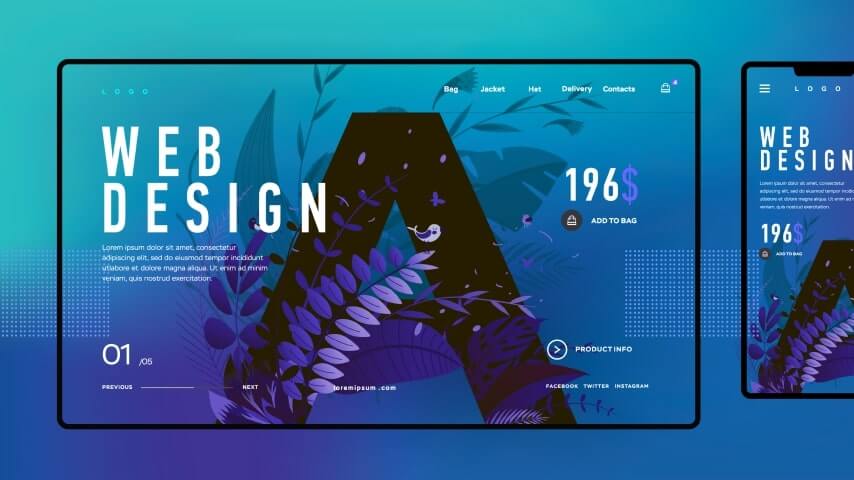
Adobe XD is perfect for web design. It allows you to create interactive prototypes and user interfaces with ease. Creative directors and branding specialists often use Adobe XD to make sure that every element of their website interface aligns with the brand’s vision and style.
Use Adobe XD to incorporate 3D elements and animated designs to make your website more dynamic and user-friendly. Create layouts that feature center-stage graphic design elements and focal points to guide users’ attention.
Key Features:
- Interactive Prototyping: Design and test interactive user interfaces.
- Responsive Resize: Easily adjust designs for different screen sizes.
- Repeat Grid: Create and update repeated content efficiently.
- Voice Prototyping: Add voice interactions to your prototypes.
- Coediting: Collaborate with team members in real-time.
- 3D Transforms: Add depth to your designs with 3D elements.
5. Animate elements with Adobe After Effects
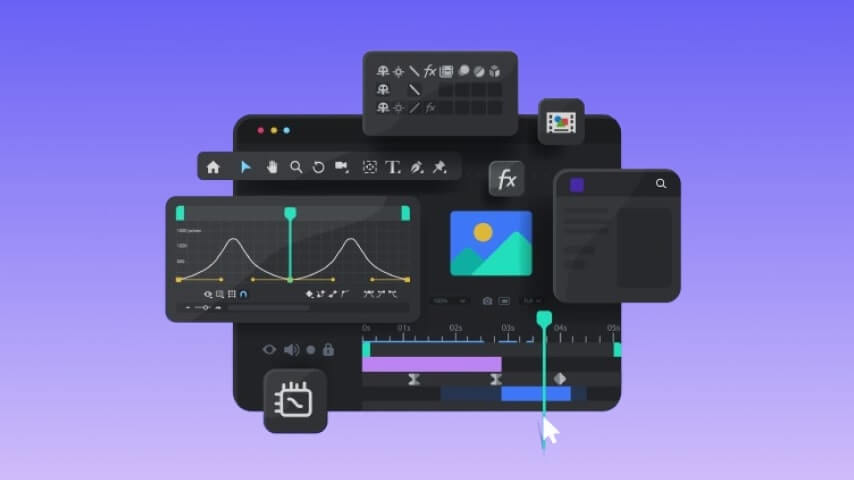
Adobe After Effects is ideal for adding motion to your designs. From subtle animated elements to complex animations, After Effects can help you create engaging content with lasting impressions, especially for social media graphics and promotional videos.
Use After Effects to bring your static designs to life with sophisticated motion graphics and visual effects. The software supports 2D and 3D animation and integrates seamlessly with other Adobe Creative Cloud apps like Photoshop and Illustrator.
Key Features:
- Motion Graphics: Create stunning animations and visual effects.
- Keyframing: Control animations with precision.
- Text Animation: Animate typography for dynamic text effects.
- Visual Effects: Apply effects to add depth and realism to your videos.
- 3D Compositing: Integrate 3D elements into your compositions.
- Plugins and Presets: Enhance your workflow with a wide range of plugins.
Turn trends into products
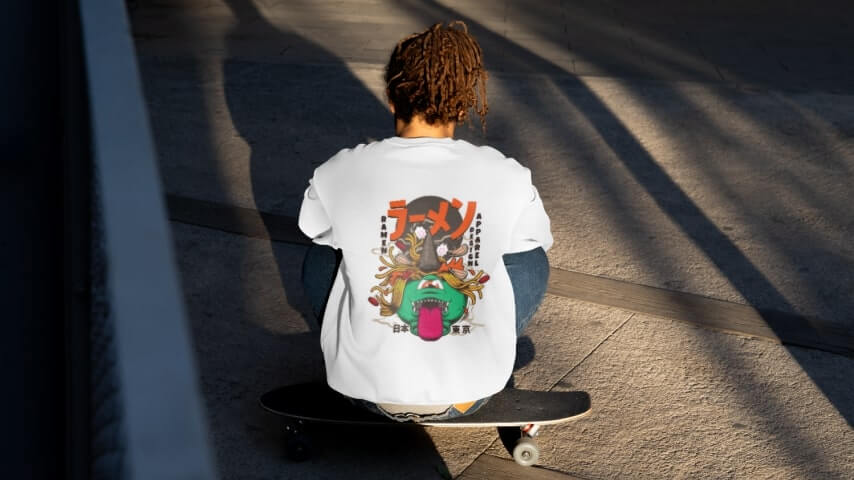
1. Sign up
Sign up for Printify for free to access all the tools you need to create and sell your designs. You can also check out our free t-shirt designs for inspiration on the latest graphic design trends.
2. Select and design your products
Choose from various products from the Printify Catalog, from apparel to home decor. Use Adobe tools and the Printify Product Creator to design and apply your graphics of products.
Experiment with different product styles, materials, color palettes, and t-shirt printing methods to find the perfect match for your graphic design trends. If you’re looking to create a small business, consider your brand imagery, product design, website, and even packaging.
3. Decide where to sell
Pick between an eCommerce platform or online marketplace to set up your digital storefront. Printify offers multiple integrations with many of the top eCommerce sales channels in the world.
4. Let Printify do the rest
Upload your graphic design, publish products, and sit back. Printify’s network will handle printing, shipping, and customer service whenever you make a sale.
FAQ
Current design trends include minimalistic designs, vibrant colors, 3D elements, sustainable design, smooth curves, retro and nostalgic styles, and animated elements.
Graphic designers are also exploring experimental typography and abstract shapes to create unique and engaging visuals.
A trend design refers to styles and techniques that are popular and widely adopted in the design industry at a given time. These designs often reflect broader cultural and technological shifts and can vary significantly across media and platforms.
The next big thing in design is likely to be further focusing on personalization and interactivity, making designs more immersive and engaging. Advances in AI technology will also play a significant role, enabling designers to create dynamic content with a more human touch.
While it’s difficult to predict exactly, trends suggest a continued focus on sustainability, interactivity, and advanced use of AI technology in design.
Vintage minimalism and nostalgic designs are expected to remain popular alongside innovations in data visualization and experimental fonts.
To summarize
As design continues to evolve, staying informed and adaptable is key. Stay ahead of the curve to bring fresh air into your projects and make a memorable impact.
Mastering the design trends for 2024 with Adobe’s suite of tools can transform your creations. Whether you’re crafting minimalistic and clean designs, experimenting with color combinations and gradients, or adding depth through 3D elements, Adobe has the resources to help you succeed.
Once you’re ready to sell, use Printify to fill your eCommerce storefront with trending designs and quality wholesale products. Let your creativity shine in the forefront of graphic design.



